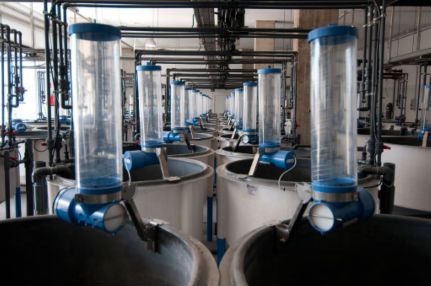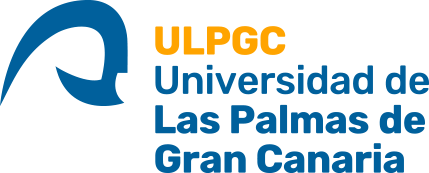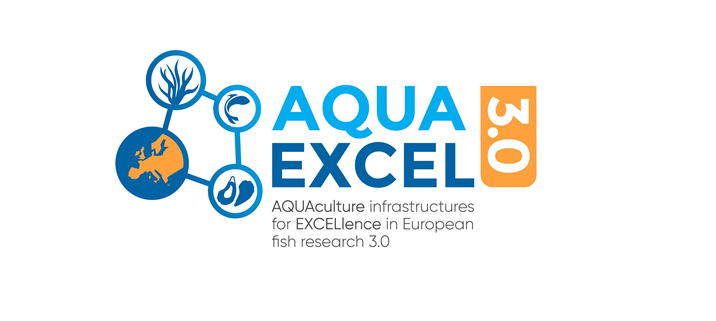Warm Water Species Selection Unit (WWSSU)

How to acces our Research Facility
Researchers from any EU or Associated State can apply for access to any of the AQUAEXCEL Research Infrastructures. Applications must be made to use a Research Infrastructure in a different country to that of the lead researcher. Details of the other Research Infrastructures available within AQUAEXCEL can be found on www.aquaexcel.eu and on each institution website.
Each Research Infrastructure has a budget based on units of access, which are detailed for ULPGC on this page. Access to the facilities is provided free of charge to users and travel and subsistence expenses will also be paid. In general, it is anticipated that access will be in the form of one or in some cases two scientists travelling to work at one of the Research Infrastructures for a period of between one and three months.
Applications for Transnational Access may be made by any organisation (including commercial companies), but the conditions of access require the results of the work to be published and made available to the scientific community via standard channels.
Applications for Transnational Access should be made in accordance with the guidance that are made available on the project website (www.aquaexcel.eu). Applicants are also encouraged to directly contact individual facilities to discuss their research plans in advance of submitting an application.
Applications for Transnational Access will be reviewed by an expert selection panel and an independent ethics adviser. Projects selected for Transnational Access will be expected to demonstrate high scientific quality, make efficient use of resources and effectively address issues important for the development of European aquaculture – e.g. as expressed through the Strategic Research Agendas of the European Aquaculture Technology and Innovation Platform (www.eatip.eu).
Universidad de Las Palmas de Gran Canaria (ULPGC)
GIA (Grupo de Investigación en Acuicultura) is a Joint Research Unit of the ECOAQUA, with a 30 years experience in fish aquaculture RTD, mainly nutrition, pathology, new species and genetics. One of its main achievements has been the clarification of the biological mechanisms involved in the regulation of the functioning of several tissues by means of dietary nutrients, using histological and immune-histological studies. Besides, GIA has developed physical tagging systems and selection schemes in sparid species and microarrays, and molecular markers for genealogies and health studies (microsatellites, TNF, IL11, GR, HSP70, HSP90, Δ5 and Δ6 desaturases).
Name of the infrastructure: Warm Water Species Selection Unit (WWSSU).
Location: Techonological Scientific Park of ULPGC.
Web site address: ECOAQUA
Contact: Rafael Ginés Ruiz / rafael.gines@ulpgc.es / +34 928454361
AQUAEXCEL TNA facility: Warm Water Species Selection Unit (WWSSU)
Short description: WWSSU is an infrastructure where genetic selection programs can be done for families of, at least, 48 half sibs or 96 full sibs, containing culture tanks (1 m3 and 0.5 m3) and breeders tanks (10 m3, 40 m3 and 80 m3), where fish culture is possible from larvae until adults.
Keywords: On-growing, breeders, quantitative and molecular genetics, microsatellite, breeding program.
Technical labs: Laboratory of Molecular Biology and Quantitative Genetics techniques, including manual and automatic sequencers, gel documentation systems, 5 color gene expression equipment, quality quantifier of nucleic acids, design and planning of breeding schemes, development of individual identification systems for physical and molecutar resconstruction of genealogy, estimation of genetic parameters and evaluation of breeders.
Processing labs: Our facility has different kind of laboratories for molecular genetics, quantitative genetics and meat and fish quality analysis.
Lodging facilities: No.
SERVICES - scientific support: Design of experiments, support of staff (sampling, etc..), realizing of experiments and data analysis.
SERVICES - electronic databases: No.
SERVICES - quality assurance: In our facility, ourself protocols are carried out for monitoring the quality of experiments, which are in agreement with regional, national and European legality for ethical and welfare issues.
Safety and ethical issues: A guide for housing and care of marine fish.
Facility Unit 1 Information [Warm Water Species Selection Unit (WWSSU)]
Name Facility Unit 1: Warm Water Species Selection Unit (WWSSU).
TNA: Yes.
Contact (Researcher): Rafael Ginés Ruiz / rafael.gines@ulpgc.es / +34 928454361
URL: ECOAQUA
General description: WWSSU is a flexible infrastructure containing, tanks for mating, tanks for rearing larvae and on-growing process, and tanks for breeders. All of them are prepared for on-line monitoring of temperature, oxygen, pH, flow and feed. The tank volumes are 0.5 m3, 1 m3, 10 m3, 40 m3, 80 m3. Total biomass around 624 kg for on-growing and 1,040 kg for breeders. Species: gilthead seabream, red porgy, redbanded seabream, dentex sp, seabass, meagre, seriola sp, etc...
Technical description: As relevant technical features: this infrastructure contents biofilter and monitoring for feeders, pH, oxygen, temperature, flow and photoperiod.
Remote monitoring & control: WWSSU allows remote experimentation via the Internet, and information about video monitoring.
Water and environmental conditions: WWSSU is an open water system.
Flowrate: The flow rate range per rearing tanks is 2-4 twice per day, while this rate is 4-6 twice for breeder's tanks. The flow is monitored automatically and controlled automatically.
Temperature: 17.8 – 22.3ºC. It is monitored manually or automatically, and controlled manually.
Salinity: 36 ± 1‰. It is monitored manually.
Oxygen: Range: 6 – 8 mg/l. It is monitored manually or automatically, and also controlled automatically.
pH: 8.2±0.2
Light intensity and wavelength: Visible light controlled manually.
Photoperiod: Up to 200 lux, monitored manually or automatically and controlled automatically.
Fish measurements: Manually are measured the following parameters: size, weight, dressing percentage, visceral fat, gutted body weight, fillet weight and deformity.
Automatically are measured the following parameters: morphological traits, tag, behaviour, muscle fat, moisture, ash, collagen, genotype by multiplex and molecular markers.
Modality of access
Users can also have access to individuals from the different lines in order to conduct trials in their own laboratories. Fish are shipped by airplane in cube-containers by GIA researchers which have a wide experience and success in this process. The number of trials per year will depend on the numbers of families demanded and the requests by the different partners.
Unit of access
The unit of access is defined as 1 tank/week, equaling the occupation of 1 tank of 1m3 for 7 days. Occupation of small (500 L) tanks will be assigned a fraction or a multiple, respectively, of the standard tank unit. One project is expected to comprise 45 tanks on average during twelve weeks.

The University Institute ECOAQUA is a research centre that belongs to the University of Las Palmas de Gran Canaria, a public institution that offers a wide range of degrees in all the major areas of knowledge, with the aim of providing comprehensive training to those who come to it, in a commitment based on innovation, quality and internationalisation.










